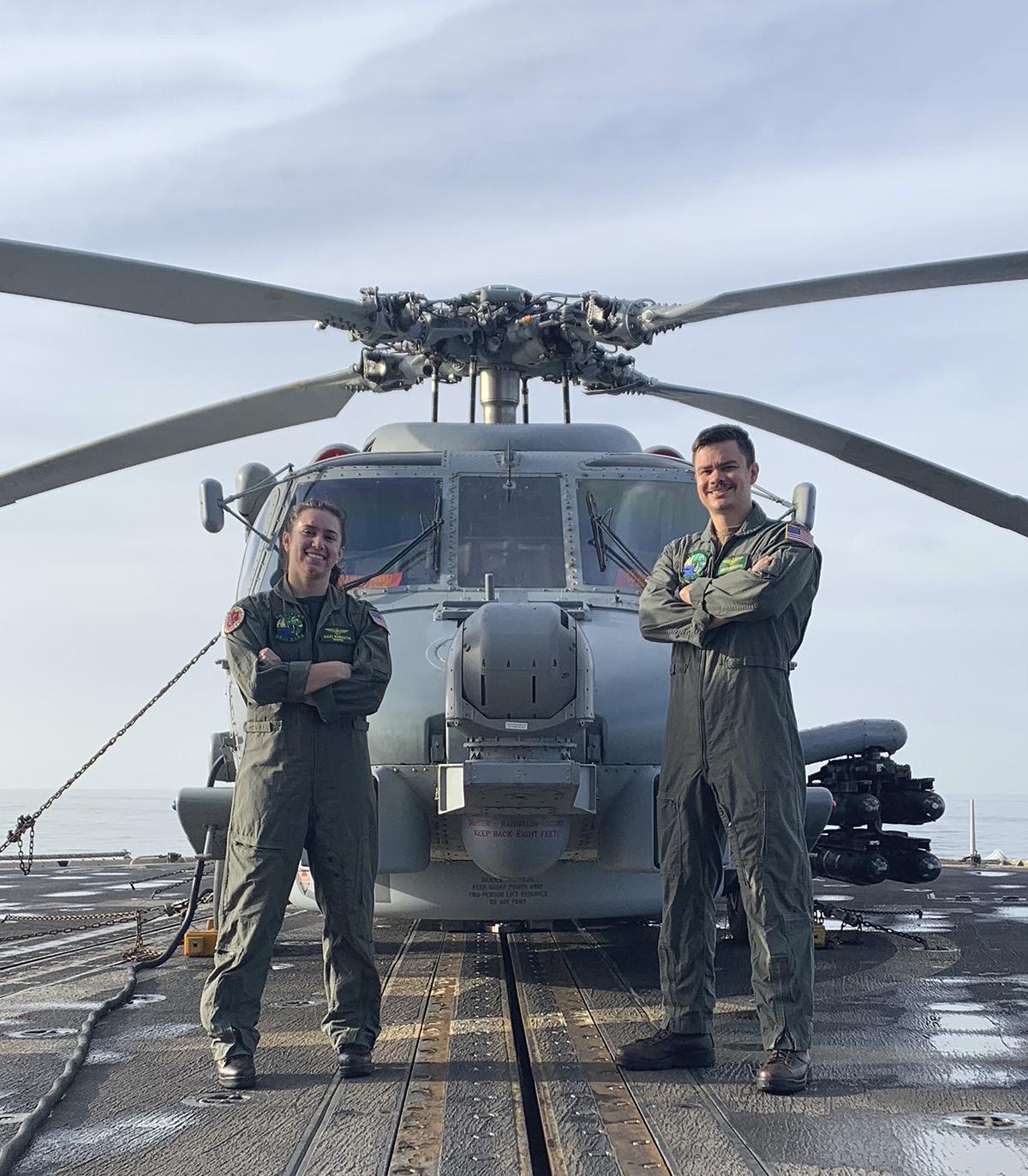Focus - UAVs and You Moderate Bird Activity: An Aerial Pivot to Nature’s Drone Threat By LT Justin “Toto” Davis, USN
"I suddenly remembered my Charlemagne. Let my armies be the rocks, and the trees, and the birds in the sky" - Professor Henry Jones, Indiana Jones and the Last Crusade
I
n last quarter’s Rotor Review, we broke down the mechanics of a bird strike from a bird’s perspective, dissecting how a seemingly avoidable incident like a bird strike occurs. In that article however, large generalities were made in discussing specific bird characteristics by lumping the whole of the bird class into two large groups based on body size and maneuverability. This article aims to parse those groups down into smaller categories, identify some representative species in each category, and highlight their characteristics which make them threat worthy.
As for their flight behavior, both species predominantly utilize thermals to glide and soar in the search of food AKA carrion. This soaring behavior is what makes them so hazardous as they usually take flight in the afternoon, catching and riding thermal updrafts for hours at about 1,600 feet AGL. The Black Vulture in particular has even been observed to soar at altitudes of 650 feet AGL and below, mainly in the late afternoon to evening timeframe. Given their size, distribution, and soaring behavior, it’s easy to see why vultures are ranked quite high in terms of BASH hazard.
Appearing across nearly every operating environment and employing a wide range of capabilities, these naturally occurring drones if you will are an inherent threat to us at all times and at all altitudes. Each species is specially adapted to its own specific environment which means that each species also has its own set of advantages and disadvantages we can exploit to avoid a strike altogether.
Geese and other Waterfowl
Birds Analysis Appearing in order from the most hazardous to helicopters to the least, the following group descriptions provide a general overview of the bird group and then anchor down on key aspects of their physical characteristics and behavior that make them a threat to us. Hopefully this helps you to predict when and where a strike may occur based on your location, the time of year or day it is and the altitude at which you’re flying. As always, keep in mind that this list is not all inclusive.
Geese. Canadian Geese. Snow Geese. It doesn’t matter the flavor, this group of birds are large, extremely tolerant of human activity, have high population densities, and routinely squat in urban/suburban areas where food is plentiful yearround. These qualities make them a very high BASH risk. Just their size alone, close to 15 pounds for male Canada Geese, make them a considerable threat as striking one would be akin to hitting an airborne cast iron skillet, gallon of milk, or bowling ball for comparison. Not to mention, that large body size only hinders their ability to maneuver away from an aircraft should one get too close.
Vultures
When it comes to flight behavior, geese pose the highest risk for helicopters when they attempt to take flight from a field in response to an advancing aircraft flying at a low altitude. Low flying helicopters are unfortunately quite capable of stirring up animal life when in low-level flight. In terms of migratory flight altitudes, Canada Geese have been observed to fly at altitudes between 1,000 to 3,300 feet. These migration routes take them South from Canada in the winter to the southern portions of the United States then return North in the spring. With that said, increasing proportions of geese populations do remain in locations year-round if food is available.
Vultures are routinely ranked as the most hazardous bird group when it comes to bird strike risk. This is primarily due to their size, distribution, and altitude at which they fly. There are two species of vultures found throughout North America year-round, Turkey Vultures and Black Vultures. Both are known for their large body size, expansive wingspans (up to six feet) and relatively large body mass (up to 6 pounds for Black Vultures). In terms of striking an object of a similar body mass, smacking into a vulture at helicopter speed would be like hitting an adult cat, an average sized pumpkin, or two copies of Leo Tolstoy’s War and Peace. Rotor Review #153 Summer '21
Birds of Prey (Eagles, Hawks, Owls, etc.)
44









































